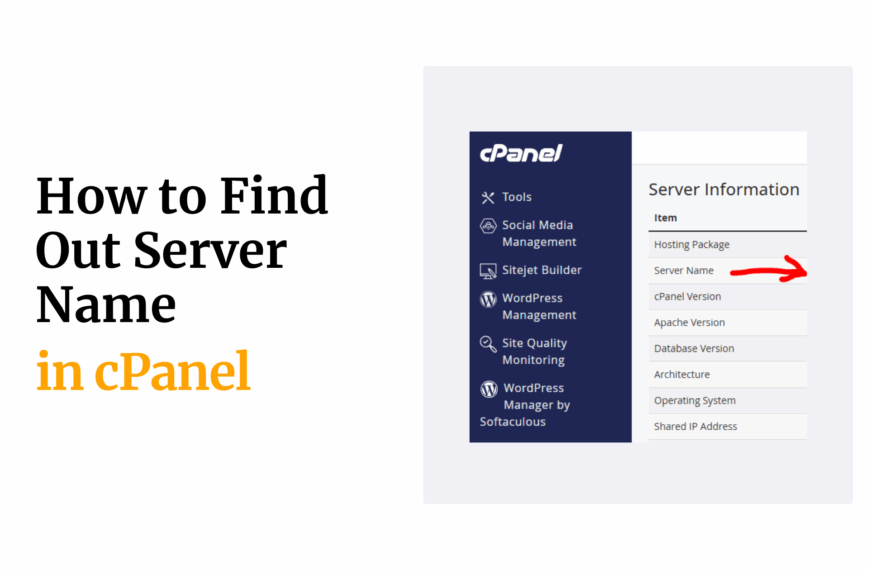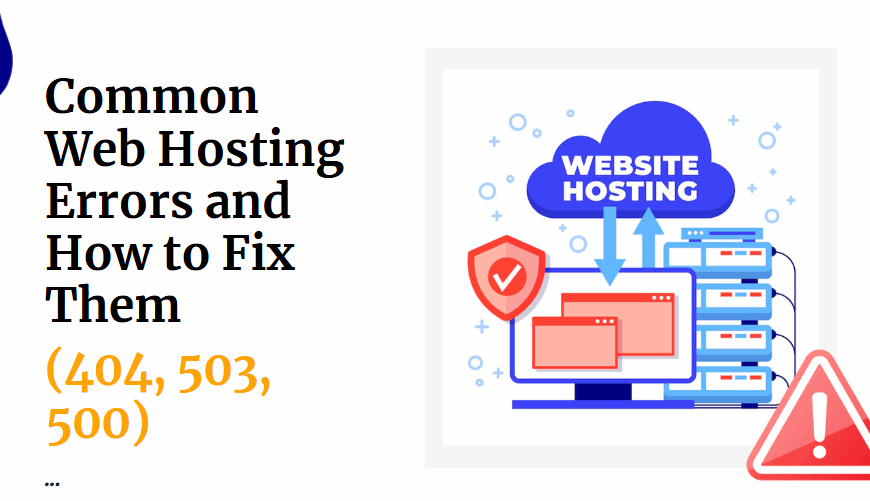Server downtime is that nightmare every website owner hopes to avoid.
You don’t want to be busy running an e-commerce store, and just as customers flood your site during a Black Friday sale, it crashes.
Frustrating, to say the least, right?
And remember, it is not just about a website going offline; there is more at stake.
You get a significant amount of lost sales, provoked customers, and, as if that’s not enough, damage to your very brand’s reputation.
So, what triggers this server downtime, and how can you reduce the chances of it happening?

In this post, we are exploring the reasons behind server downtime and its effects on businesses, as well as the most effective methods to reduce downtime.
And we’ll describe how hosting solutions can help keep your site operational as well.
Off we go!
Table of Contents
What Is Server Downtime, Anyway?
We say the server is down when you try to access a website and see the infamous “503 Service Unavailable” error.
Put simply, server downtime is when computers running a website, application, or online service, also called servers, stop working for one reason or another.
We can categorize server downtime into two:
1. Planned downtime: This happens due to software or system updates such as system migration, renewing certificates, or uploading a new website.
I bet you’ve seen those messages before, where a website or an app sends you warnings for pending downtime before they’re about to do maintenance.
2. Unplanned downtime: This one is downtime that is caused by unexpected crashes from hardware failures, cyberattacks, or even human errors. This is the type that gives business owners the most sleepless nights.
Almost everywhere, server downtime is such a big deal, especially with businesses racing to go digital.
With the growth of e-commerce—I’m thinking of platforms like Takealot or local startups—and SMEs relying on websites to reach customers, even a few minutes of downtime can be so costly.
Research indicates that downtime can cost businesses thousands of cash for every hour of downtime, which, in a competitive market, is simply not a gamble one can afford.
Now, if you like your coins in your pocket, this is definitely a problem.
Why Server Downtime Hits Hard in South Africa
Let us be frank: the South African digital market is really thriving.
From food delivery services in Durban to fintech companies in Sandton, businesses are seeking to have a reliable digital footprint.
The problem, however, is that the country does not enjoy rock-solid internet infrastructure, which further compounds the challenges plagued with server downtime.
This is why it is a hassle:
- Customer trust takes a hit: If your site is down when a customer is trying to buy, they might head to a competitor. South Africans are astute and expect smooth experiences.
- Revenue losses add up: For e-commerce, every minute offline means lost sales. Imagine missing out during peak seasons like the December holidays.
- SEO rankings suffer: Google doesn’t like unreliable sites. Frequent server downtime can push your site down search results, making it harder for customers to find you.
Good news: some hosting solutions out there, like Truehost, get this!
Their cloud hosting plans are built to keep South African businesses online, even in challenging conditions.
But before we dive into hosting solutions, let’s unpack what’s causing these outages.
Common Causes of Server Downtime
So, who’s the culprit for your website suddenly going kaput?
This is not something that just comes from nowhere, but rather it’s triggered by specific issues.

Here are the usual suspects:
1. Hardware Failures
Servers are like any machine—they can break.
Hard drives fail, power supplies burn out, or cooling systems give up, especially in older setups.
In South Africa, where power outages (hello, load shedding!) are a reality, hardware issues can be a major culprit.
Without proper backup systems, a single failure can mean hours of server downtime.
2. Software and Configuration Errors
Software isn’t perfect.
A buggy update, a misconfigured plugin, or an outdated operating system can crash your server.
For example, if you’re running a WordPress site (like 40% of the web does), an incompatible plugin can bring everything down.
Truehost’s WordPress hosting includes optimized setups to avoid these pitfalls.
3. Network Issues
South Africa’s internet can be patchy in some areas, and network failures—like severed undersea cables or ISP glitches—can cause server downtime.
Even in urban hubs like Gauteng, bandwidth overload during peak traffic can slow or crash servers.
4. Cyberattacks
Cybercrime is on the rise in South Africa.
Distributed Denial of Service (DDoS) attacks flood servers with traffic, knocking them offline.
Ransomware or malware can also lock you out.
In 2024, South Africa ranked high in global cyberattack reports, making security a top concern.
5. Human Errors
We’re all human, right? Well, apart from our Robo-AI counterparts.
A technician might accidentally delete a critical file or misconfigure a server.
These mistakes, though rare, can lead to server downtime, especially without proper safeguards.
6. Overloaded Servers
Traffic spikes—like during a viral marketing campaign or Black Friday—can overwhelm servers if they’re not scaled to handle the load.
South African e-commerce sites often face this during festive seasons.
The Real Impact of Server Downtime on Businesses
Now that we know what causes server downtime, let’s talk about why it’s such a headache for businesses.
Downtime hurts in these ways:
Financial Losses
Every minute your site’s down, you’re losing money.
For an e-commerce store, a one-hour outage during a sale could mean thousands of rands in lost revenue.
Globally, downtime costs businesses $400,000 per hour on average, and while SMEs might face smaller losses, they’re just as painful when margins are tight.
Customer Experience
Your clients expect fast, reliable service.
If your site’s down, customers get frustrated and may never return.
In a market where loyalty is hard-won, server downtime can push users to competitors easily.
SEO Damage
Google’s algorithms prioritize user experience.
Frequent server downtime signals unreliability, which can drop your rankings.
For businesses relying on organic traffic, this is a silent killer.
Brand Reputation
Repeated outages make your brand look unprofessional.
Word spreads fast, especially on social media, and South African consumers aren’t shy about sharing bad experiences.
How to Minimize Server Downtime Like a Pro
Server downtime isn’t inevitable.
With the right strategies, you can keep your site up and your customers happy.
Here’s how your business can fight back:
1. Choose Reliable Hosting
Your hosting provider is your first line of defense.
Truehost’s dedicated servers and cloud hosting offer 99.9% uptime guarantees, backed by local data centers.

This means faster load times and less risk of downtime, even during power or network hiccups.
2. Set Up Redundancy
Think of redundancy as a backup plan for your backup plan.
Load balancers, failover servers, and redundant power supplies ensure your site stays online if one component fails.
Truehost’s hosting solutions make redundancy affordable for SMEs.
3. Stay on Top of Maintenance
Regular server maintenance—like updating software, checking hardware, and patching security holes—prevents unplanned server downtime.
Schedule updates during off-peak hours to avoid disrupting customers.
4. Beef Up Cybersecurity
Protect your servers with firewalls, DDoS protection, and regular security audits.
Truehost’s SSL certificates and security features help shield your site from South Africa’s growing cyber threats.
5. Scale for Traffic Spikes
Plan for busy periods like Black Friday or holiday sales.
Truehost’s scalable hosting lets you add resources on demand, so your server doesn’t buckle under pressure.
6. Monitor Your Servers
Real-time monitoring catches issues before they cause server downtime.
Tools like those offered by Truehost alert you to performance dips, letting you act fast.
7. Have a Disaster Recovery Plan
Backups are your safety net.
Regular backups and a clear recovery plan ensure you can restore your site quickly after an outage.
Truehost’s backup services make this easy for South African businesses.
Truehost: Your Partner Against Server Downtime
Let’s talk about Truehost for a second.

As the top South African hosting provider, they know the local market inside out.
Their web hosting plans are tailored for businesses like yours, with features like:
- Local data centers: Faster speeds and better reliability for South African users.
- 99.9% uptime: Keeps your site online, even during tough conditions.
- 24/7 support: Local experts ready to help when you need them.
- Scalable solutions: From shared hosting for startups to dedicated servers for growing businesses.
Truehost has helped countless South African businesses—like e-commerce stores and SMEs—stay online.
Their affordable plans mean you don’t have to break the bank to avoid server downtime.
Wrapping It Up
Server downtime is a challenge, but it’s not unbeatable.
When you get a clear understanding of its causes, you can easily take the necessary steps to protect your business.
The impact of downtime is too big to ignore.
But with smart strategies like reliable hosting, redundancy, and proactive monitoring, you can keep your site up and your customers happy.
Providers like Truehost are here to make that easier.
Their hosting solutions are built for South African businesses, offering the uptime and support you need to thrive online.
So, why let server downtime hold you back when you can take control today?
 Web Hosting
Web Hosting Windows HostingBuilt for Windows apps and websites – stability, speed and flexibility
Windows HostingBuilt for Windows apps and websites – stability, speed and flexibility Reseller HostingLaunch a hosting business without technical skills or expensive infrastructure
Reseller HostingLaunch a hosting business without technical skills or expensive infrastructure Affiliate ProgramRefer customers and earn commissions from sales across our platform
Affiliate ProgramRefer customers and earn commissions from sales across our platform Domain SearchFind and secure a domain name in seconds with our quick lookup tool
Domain SearchFind and secure a domain name in seconds with our quick lookup tool CO ZA Domains
CO ZA Domains All DomainsExplore domain names from over 324 TLDs globally – all in one place
All DomainsExplore domain names from over 324 TLDs globally – all in one place Free Whois Lookup Tool South Africa
Free Whois Lookup Tool South Africa VPS
VPS SSLs
SSLs






